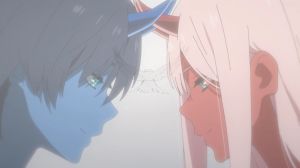
What, exactly, is it that makes James Bond, James Bond? This is a question that dozens of books, films, radio programs, and TV series have hoped to figure out over more than 60 years, in hopes of delivering fans exciting exploits of the secret agent. As evidenced by the first issue of James Bond: Origin, the question of how James Bond began might be better left unanswered, as nothing will be as fascinating as a fan’s imagination.
Videos by ComicBook.com
The storyline unfolds by focusing on a young James Bond in the middle of one of the worst attacks on the U.K. by Germany during World War II in 1941, with Bond hoping to locate and aid a former classmate. This is seemingly the present, with the narrative also jumping back in time to the school days of the future spy, teaching his peers about Judo while also putting up with bullies. When one of his professors is confronted by thugs seeking secret plans, Bond leaps into action in hopes of catching up to them, possibly leading to what could be his first covert mission.
Since the character’s debut in the ’50s, Bond has successfully been able to infiltrate a variety of organizations to obtain access, information, and technology as part of the Secret Service’s “00” program. A key requirement of being able to go unnoticed in all of these situations is an air of anonymity, which virtually every Bond adventure exploits. At its core, it’s tough to determine who has been asking to see the specifics of how the character became the icon he is today, but that hasn’t stopped the publisher from giving readers the explanation, whether they wanted it or not.
If a reader can make peace with the conceptual shortcomings of a Bond origin story, the finished product is ultimately adequate. Writer Jeff Parker ultimately has the most difficult job, as he has to reverse engineer everything that audiences love about the character, crack the code of what Bond could have undergone at a young age to become the familiar character, while refraining from delivering the fully-realized character we’ve seen in so many stories. Were we to see a “Bond, James Bond” piece of dialogue, we would likely throw the book in the trash. On the other hand, if there isn’t a hint of what makes Bond so special in the young version of the character, there might not be anything stopping the narrative from being just a generic spy story with “James Bond” slapped on the cover.
After one issue, it’s pretty difficult to deduce where Parker is going with the story. By featuring a fractured narrative, the reader is already slightly disorientated by trying to keep the timeline straight and knowing that, no matter how Bond’s current mission pans out, he’ll eventually end up right in the middle of an awful bombing. This might be commonplace for a fan of the Bond franchise, though it could be putting too much pressure on the casual reader.

Bob Q’s art is the clear standout of the book, as the depictions of the World War II feel pulpy and devastating, with these sequences contrasting Bond’s upper-class boarding school antics. If nothing else, fans of vintage spy stories set during World War II will admire the depictions of classic military aircraft and the European landscape.
An adult James Bond is known for his love of drinking, smoking, and women, which makes us wonder how the series would potentially deal with these facets of the character. Additionally, we’ve also come to expect a fair share of automotive and technological gadgets to help Bond out of a variety of situations, which are other aspects of the character we’ve yet to see and, given he’s a teenager, likely won’t see.
Die-hard fans of James Bond or classic spy stories will surely enjoy the arenas this story is beginning to explore, but the casual fan will surely be asking why this series exists in the first place.
Published by Dynamite Comics
On September 5, 2018
Written by Jeff Parker
Art by Bob Q
Colors by Bob Q
Letters by Simon Bowland








